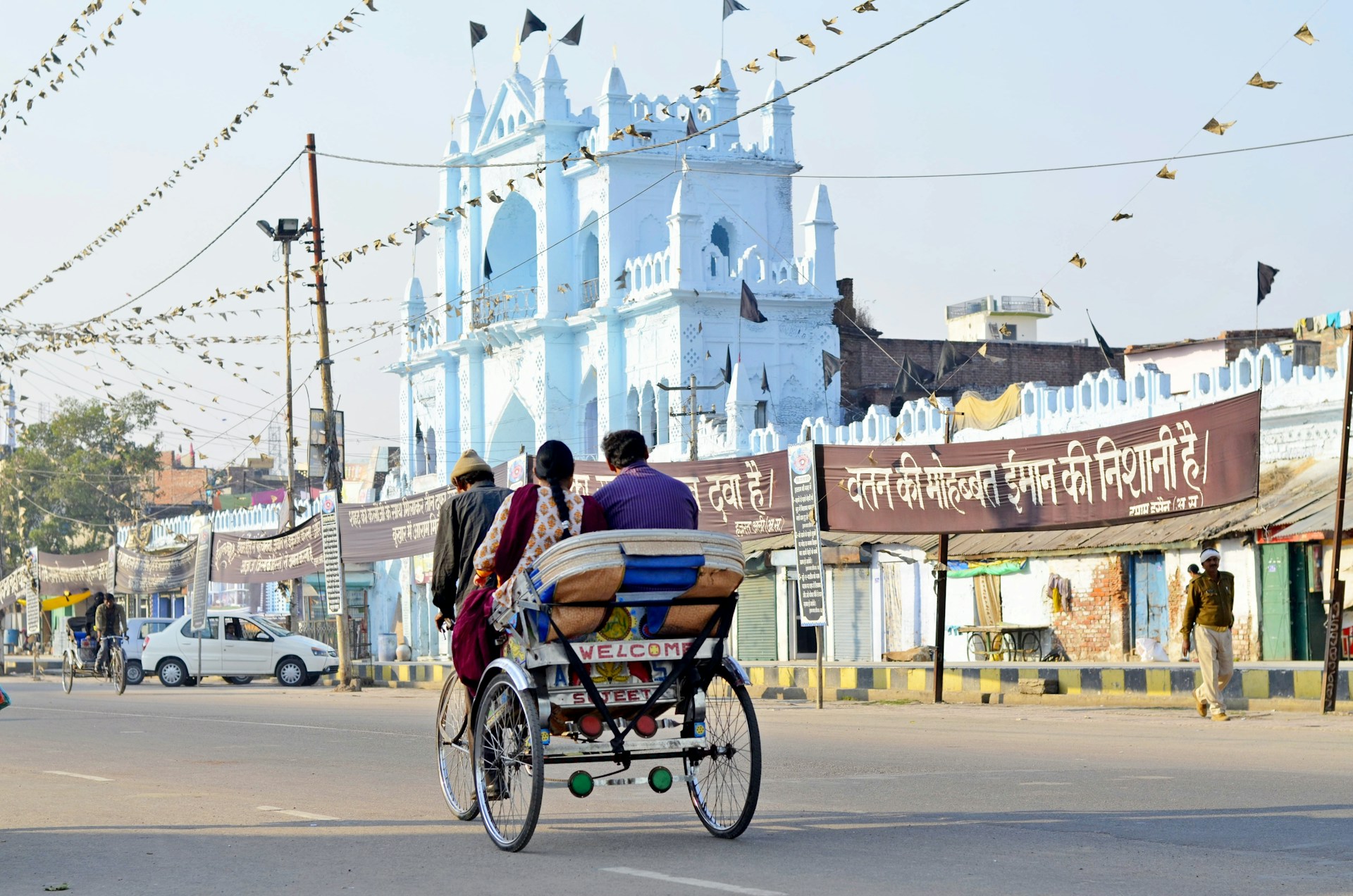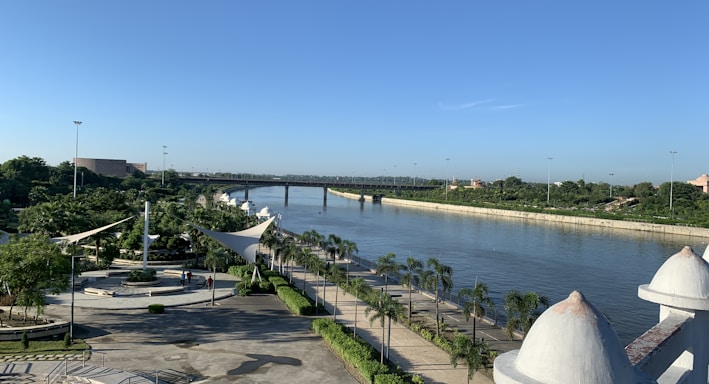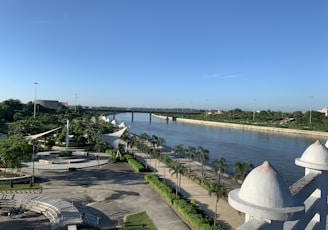
Experience Lucknow
Discover the rich history, culture, and cuisine of Lucknow, India.
मुस्कुराइए आप लखनऊ में हैं







Lucknow Insights
Bara Imambara: This historical monument is an architectural marvel. Don't miss exploring the Bhool Bhulaiya (Labyrinth) within the complex.
Chota Imambara: Also known as the Hussainabad Imambara, this is another impressive historical site with stunning architecture.
Rumi Darwaza: Known as the "Turkish Gate," it is an iconic landmark and a great spot for photographs.
Hazratganj: The main shopping and commercial area of Lucknow, ideal for shopping, dining, and people-watching.
Lucknow Residency: A historical site associated with the First War of Indian Independence in 1857, offering insights into the city's colonial past.
Ambedkar Park: A beautiful park with grand statues and architecture dedicated to Dr. B.R. Ambedkar.
Janeshwar Mishra Park: The largest park in Lucknow, perfect for a leisurely walk or picnic.
Street Food: Lucknow is famous for its mouthwatering street food, particularly kebabs and biryanis. Tunde Ke Kebab and Aminabad are well-known spots.
Shopping for Chikan Embroidery: Lucknow is renowned for its intricate Chikan embroidery. You can buy Chikan sarees, kurtas, and more at local markets.
Visit Temples: Lucknow has several beautiful temples, including the Mankameshwar Temple and Hanuman Temple.
Riverfront Walk: Stroll along the Gomti River in the evening for a peaceful experience.
Cultural Shows: Check if there are any cultural performances or shows happening during your visit. Lucknow has a vibrant arts scene.


Culture & Heritage
Lucknow, the golden city of the east’ retains an old world charm that fascinates one and all. Regarded as one of the finest cities of India, Lucknow emanates a culture that combines emotional warmth, a high degree of sophistication, courtesy and a love for gracious living. This sublime cultural richness famous as ‘Lucknowi Tehzeeb’ blends the cultures of two communities living side by side for centuries, sharing similar interests, speaking a common language -Urdu. Many of the cultural traits and customs peculiar to Lucknow have become living legends today. The credit for this goes to the Nawabs of Awadh, who took keen interest in every walk oflife and encouraged them to attain a rare degree of perfection
‘Lucknow’, this name is synonymous with architectural beauties of ‘Lakhauri’ bricks, the fragrance of ‘itra’, musical notes, the sound of dancers’ trinklets, the sweetness of ‘dussheri’ mangoes, ‘malai’ and ‘gulab revadis’, and of course its ‘Mehman Nawazi’. Known for its refinement in speech, entertainment, dresses and manners, Lucknow is also called the ‘City of Adab‘. Infact, it is here that one can experience hospitality in the true sense of the term. Various cultural ingredients have contributed to the richness of this unique city. Mention must be made of the Urdu language. Gazals, Shairi, expressive dance forms, colourful festivals, buzzing chowks and various exciting games like Patangbazi, Baterbazi & Kabutarbazi
The Kathak school founded by him was perfected by his sons Thakur Prasad, Durga Parsad. Bindadin. Kalka Prasad and the three sons of Kalka -Achchhan Maharaj, Lachchu Maharaj and Shambhu Maharaj. Today Pandit Birju Maharaj is the living doyen of this glorious house of LucknowTurning to the festivals that make, Lucknow one-of-a-kind, mention must be made to the Moharrum festival.
Lucknow became the focal point of a cultural renaissance with theshifting of capital from Faizabad to Lucknow in 1776. Under royal patronage Kathak, Thumri, Khayal, Dadra, Gazals, Qawalies and Sher-o-Shairi reached their zenith point. As a centre of Islamic learning Lucknow witnessed the formation of Lucknow school of poetry under renowned poets like Anes, Dabeer, Imam-Buksh ‘Nasika’, Mirza Mohd. Raza Khan Burq, Atish, Mirza Shauq Asar, Josh and others. Apart from Gazals, another form of long narrative poem for which Lucknow is famous is Masnavi. Elegywriting in Urdu also reached a new height through the three forms-‘marsiyas‘*. ‘salams’* and ‘nauhas‘*. Urdu as a language attained a rare degree of perfection in Lucknow and slowly Lucknow emerged as a cradle of unforgettable gazals, masnavi, elegy, hazal* and dramas.
Nawab Wajid Ali Shah, himself composed a number of songs and dramas under the pen name of , ‘Akhtari Pia’. Of the famous Indian dance styles kathak is closely associated with Lucknow.
This devotional dance stvle of pre-Mughal days was transformed into a highly eclectic dance form under the patronage of the Nawabs of Awadh. Pandit Iswari Prasad Mishra of Handia is said to be the founder of the Lucknow gharana of Kathak.
Commemorating the death of Imam Hussain, Moharrum witnesses emotional processions of tazias (models of Imam Hussain’s mausoleum at Karbala, Iraq) & Alam’s.Not only festivals, the people of this beautiful city ‘indulge in various exciting contests that have come down from the time of the Nawabs. Kite flying is one such sport. Kites of different shapes, sizes, colours take to the skies leading to all round excitement and enjoyment The art of training pigeons which was perfected by the nobility of yesteryears is prevalent even today. The pigeon flying event is yet another exciting game that is eagerly awaited. No account of Lucknowi culture is complete without a mention of the famous ‘Chowk’ of Lucknow.
The term ‘Chowk’ has become synonymous with Lucknow. ‘Chowk’ has played a vital role in the development of the Lucknowi culture. It is the pivotal point around which the traders, engravers, painters. artisans, weavers,singers and nautch girls flourished and grew. This main bazar of yester years has not changed much. but transformation is there. Its humming and lively characteristics represent Lucknowi culture in its modern day context.


Get in Touch




